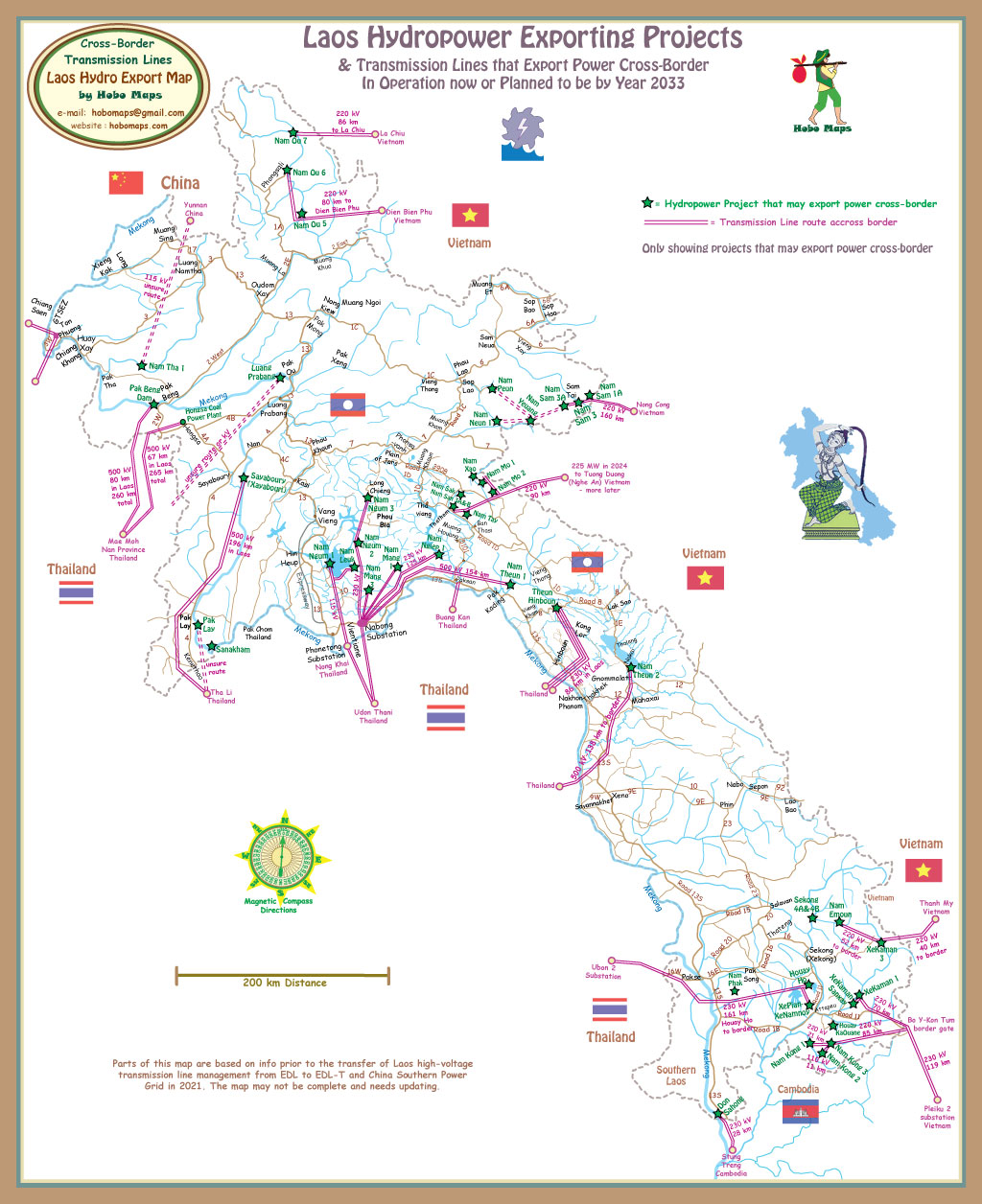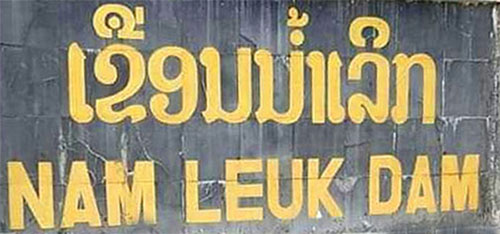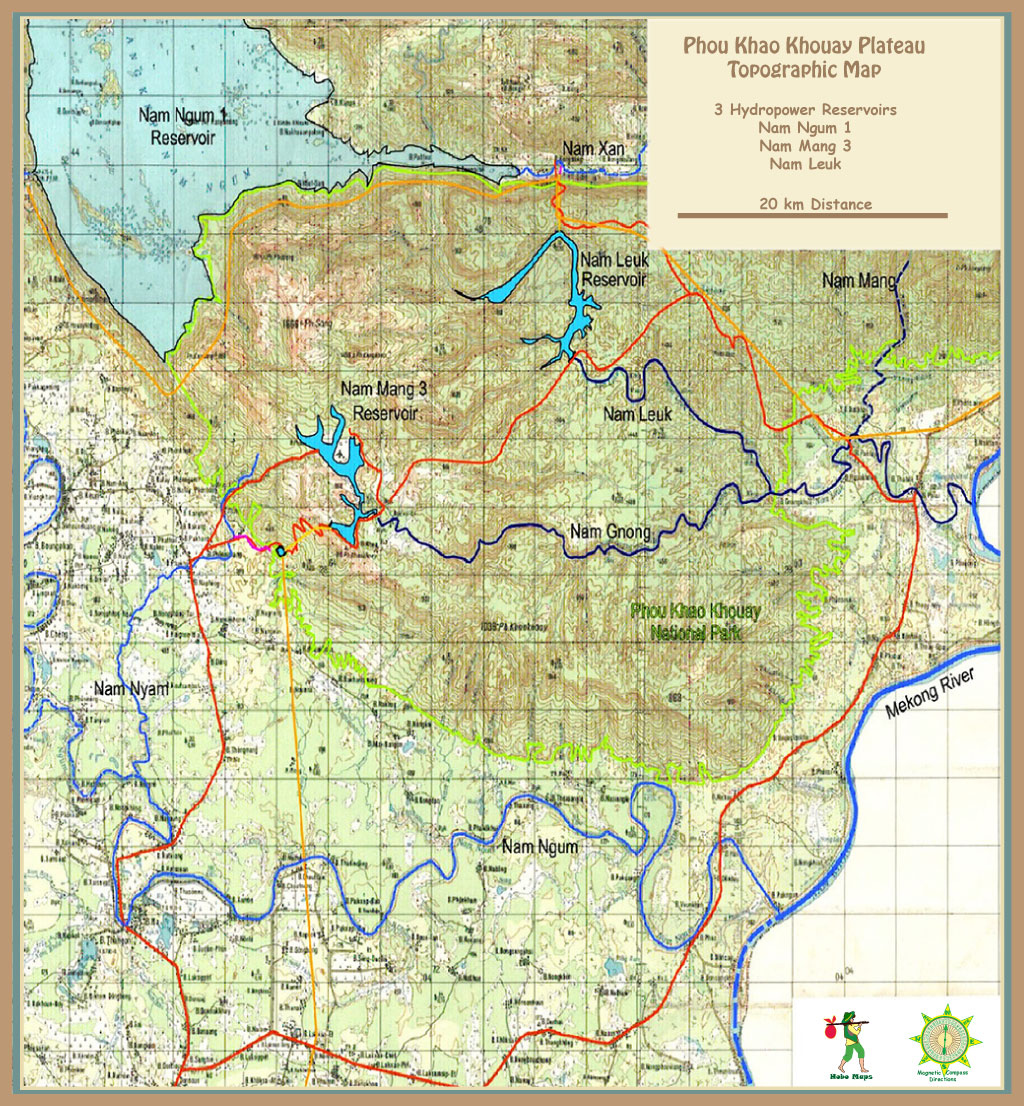
Nam Leuk Dam Hydropower info by Hobo Maps - Go to Hydropower Projects Page - - - HOME
Nam Leuk is also sometimes spelled as Nam Luek and both are pronounced as "Nam Look".
The Nam Leuk hydropower project is located in Saysomboun province approximately 80 km northeast of Vientiane by road. The inter-basin project area encompasses the sub-districts of Phonsavanh and Long Xan of Muang Hom district.
The dam is situated on the Nam Leuk River, a tributary of the Nam Mang River. The project discharges its water from the Nam Leuk Reservoir into the Nam Xan river that flows into Nam Ngum 1 Reservoir just west of the powerhouse site.
Topographic map below shows location of Nam Leuk Hydropower project:

Nam Leuk Hydropower Project layout image below.

Nam Leuk Hydropower Project Headworks image below with Powerhouse at coordinates - 18°32'06.7"N 102°56'21.0"E (18.535193, 102.939174).
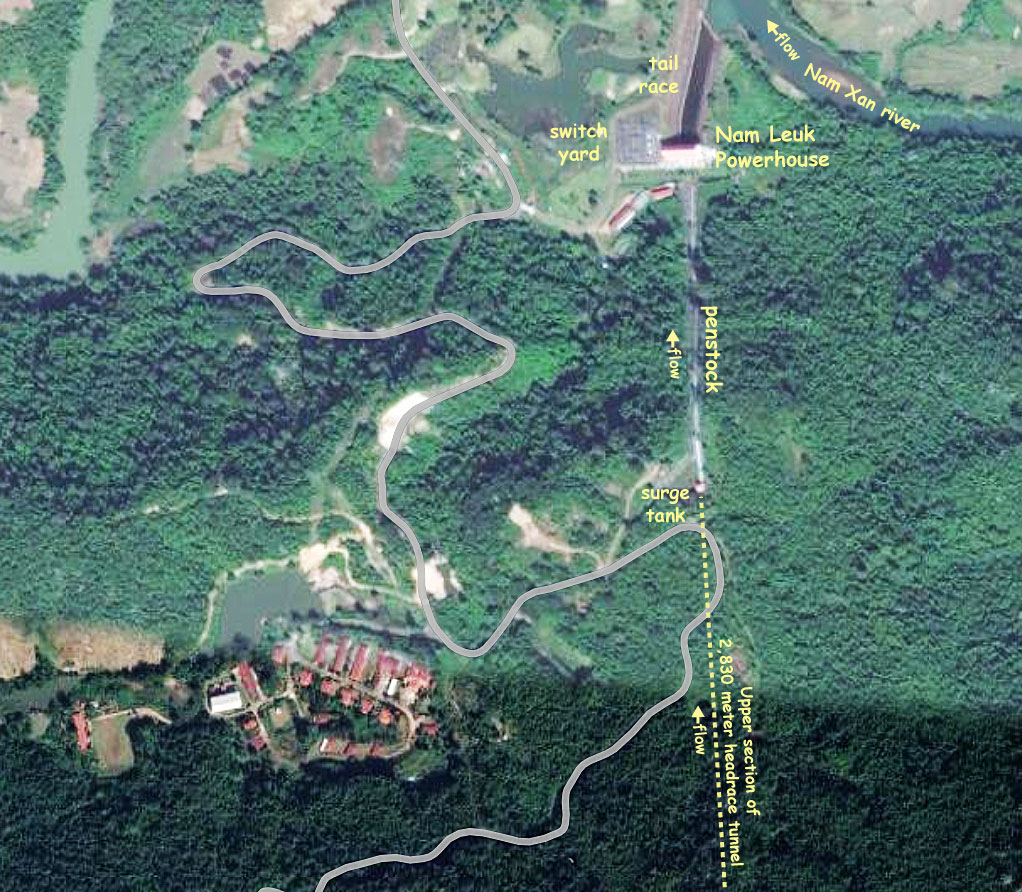
Southern area of Nam Leuk Hydropower Project image below with Dam at coordinates - 18°26'13.2"N 102°56'49.2"E (18.437, 102.947) and Nam Poun river diversion weir & pond at - 18°27'27.8"N 102°59'51.1"E (18.457722, 102.997528) (red marker).
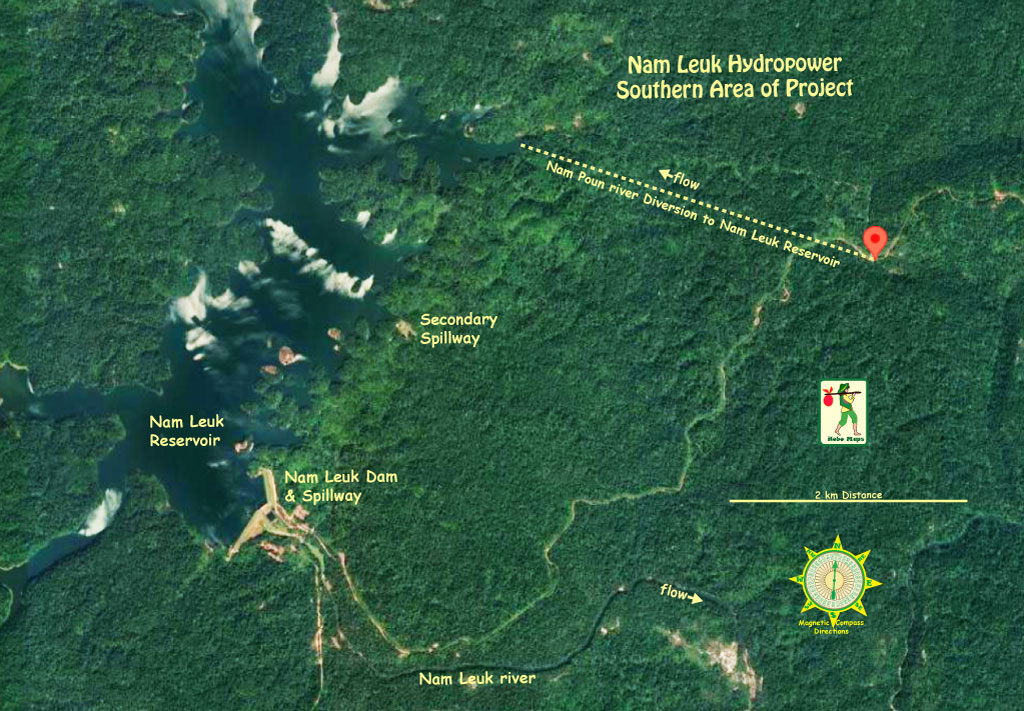
Nam Leuk Hydropower Project Intake Structure image below at coordinates - 18°30'20.8"N 102°56'14.6"E (18.505778, 102.937389).
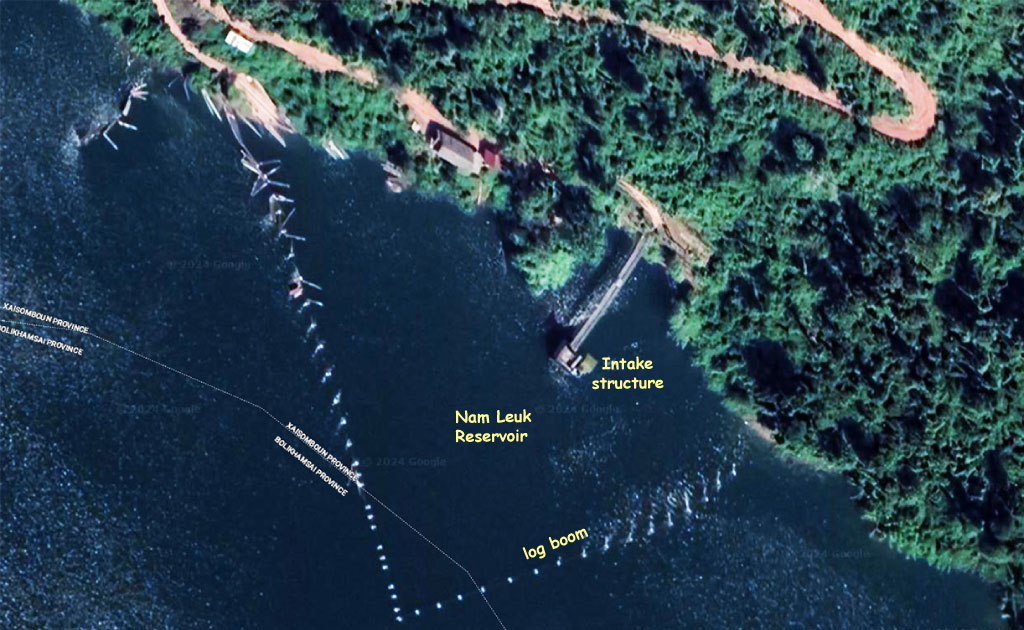
Nam Leuk Hydropower Dam & main Spillway images below:

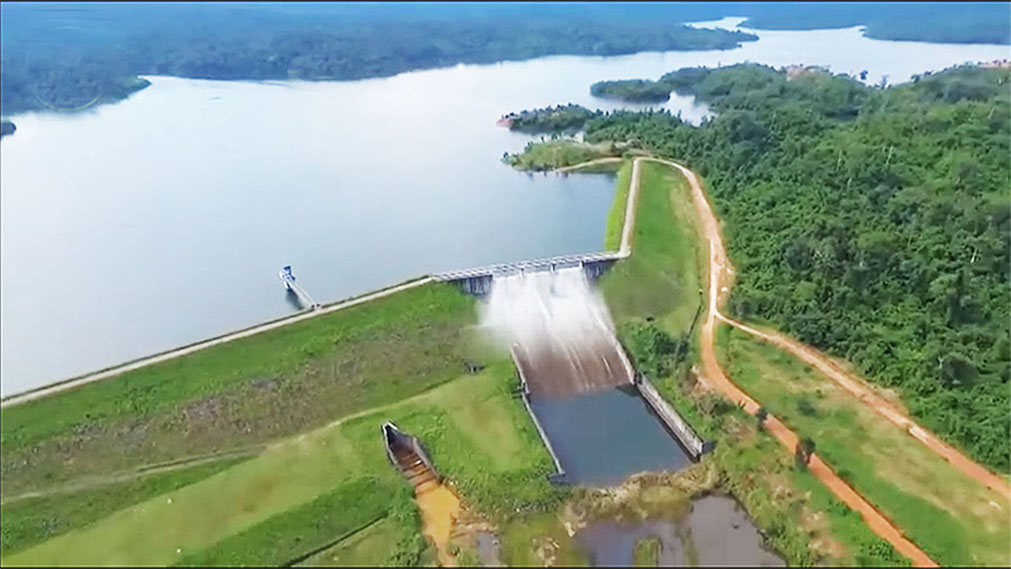
Secondary spillway image below at - 18°27'07.9"N 102°57'35.2"E (18.452194, 102.959778).
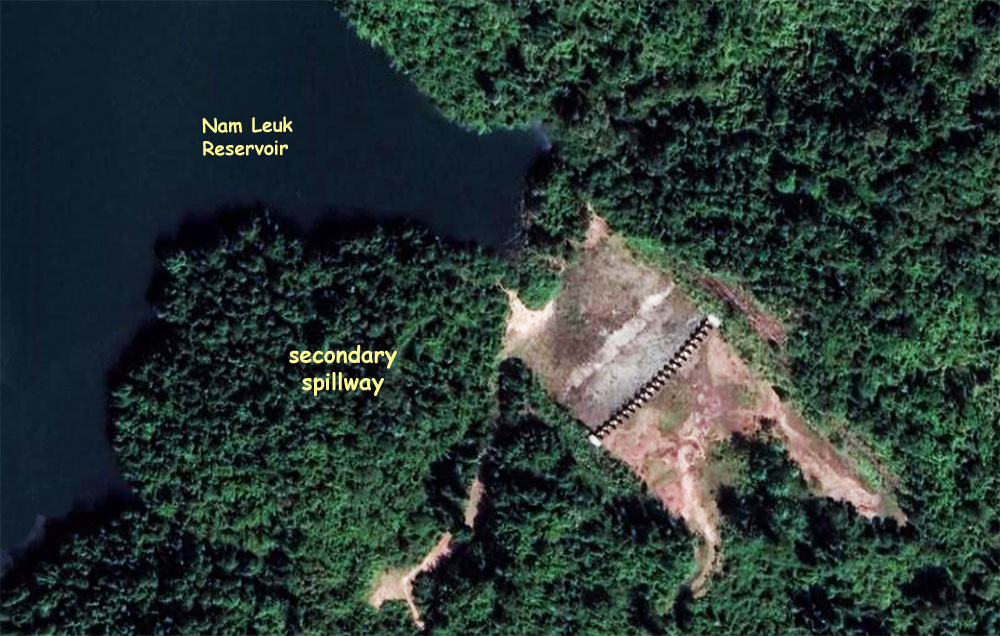
The Nam Leuk Hydropower Project is a transbasin diversion project with an installed capacity of 60 megawatts & 215 GWh annual output potential. The project is located within the Phou Khao Khouay National Biodiversity Conservation Area northeast of Vientiane capital in central Lao PDR.
The Project was completed in 1999 and funded by the ADB and the Japanese government. The project was originally owned and operated by the government of Laos but 100% ownership has been transferred to EDL GEN. Commercial operations began on August 11, 2000.
Nam Leuk powerhouse site images below:
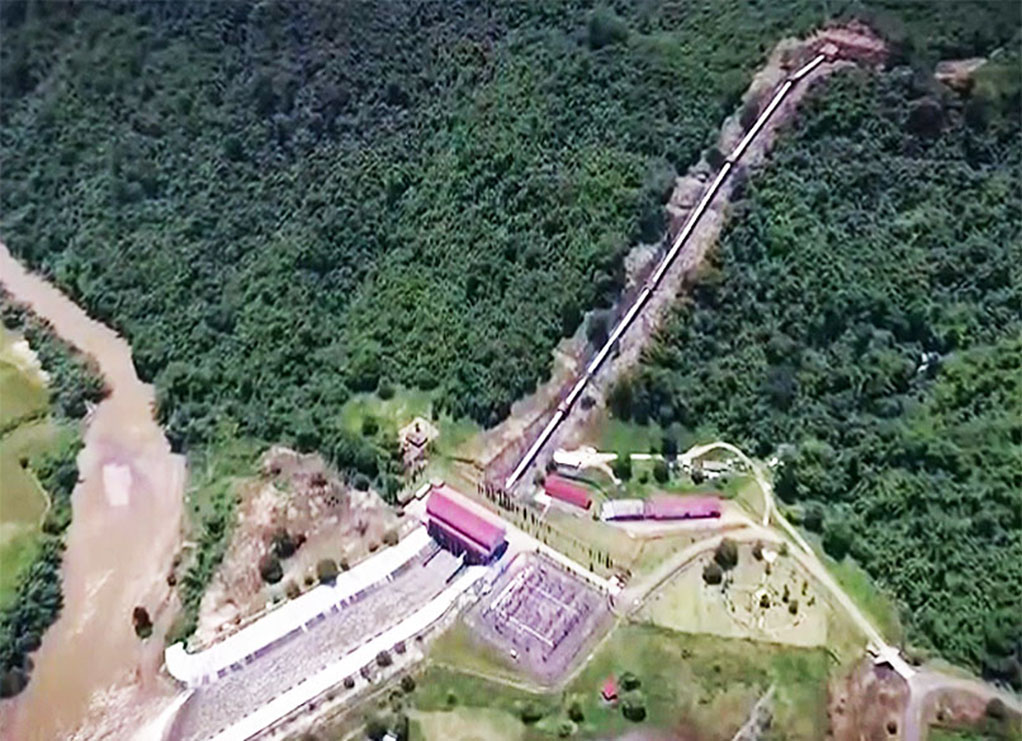
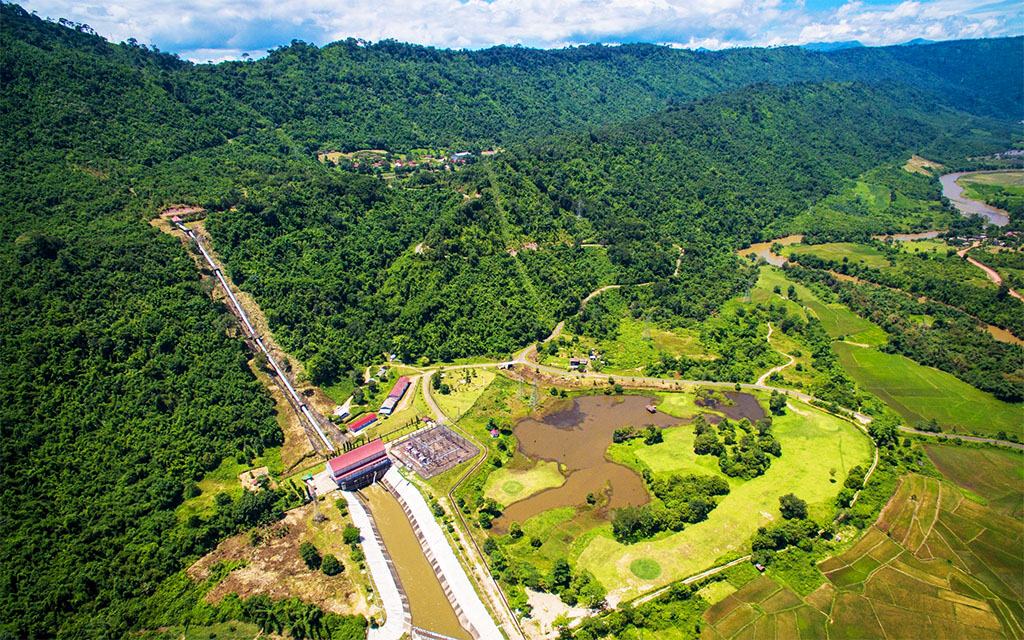
The Asian Development Bank (ADB) provided a US $52 million loan for the Project while the actual project cost came to US $130 million. Additional financing came from the Japan Bank of International Cooperation and an Official Development Assistance (ODA) loan from Japan.
Major contractors for the project were China International Water & Electric Corp (CWE) & Mitsubishi.
The Project involved the construction of a 45.5 m high rock-fill dam on the upper reaches of the Nam Leuk and the diversion of a small tributary of the Nam Leuk, the Nam Poun, with the creation of a storage reservoir of 12.8 square km.
The Project diverts most of the flow from the upper Nam Leuk and the Nam Poun basins through its powerhouse into the Nam Xan (river) which flows into the Nam Ngum reservoir. Energy is generated first at the Nam Leuk power station on the Nam Xan about 2 km upstream from where it joins the Nam Ngum reservoir and secondly at the existing Nam Ngum 1 power station. The project was hoped to increase the Nam Ngum powerplant output by about 30 Gigawatt‐hours per year.
Nam Leuk Project layout below:

The earthfill dam has a rockfill core and is 800 meters long, 45 meters high and 8 meters wide with a crest level at 411.5 meters above mean sea level. The structure has a 3-gate spillway with each gate 20 meters wide. There is also a secondary spillway elsewhere on the reservoir.
The catchment area at the dam site is 323 square km. The reservoir also receives water from the Nam Poun, a small tributary of the Nam Leuk, through a diversion weir pond. The reservoir has storage capacity of 198 million cubic meters
At full supply level (405 meters above masl) the reservoir has a surface area of 12.8 square km, while at minimum operation level (388 meters above masl), the surface area is only 5.1 square km with 31 million cubic meters dead storage volume.
The reservoir is about 3.7 km away from the power house.
Two weirs have been added that create 14.2 million cubic meters of additional water storage capacity. This adds about 6.9 GWh output per year to the facility.
The headrace tunnel is 2,830 meters long and 4.9 meters in diameter.
The 12-meter-high surge tank in the image below is located towards the downstream end of the headrace tunnel.
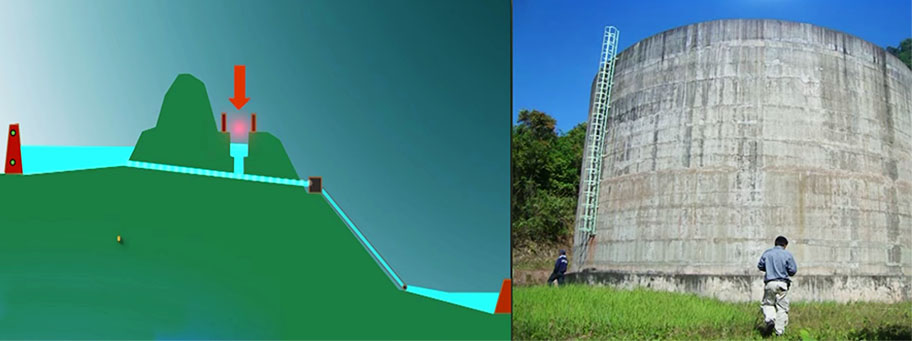
Nam Leuk & Nam Ngum 1 Data Chart below:
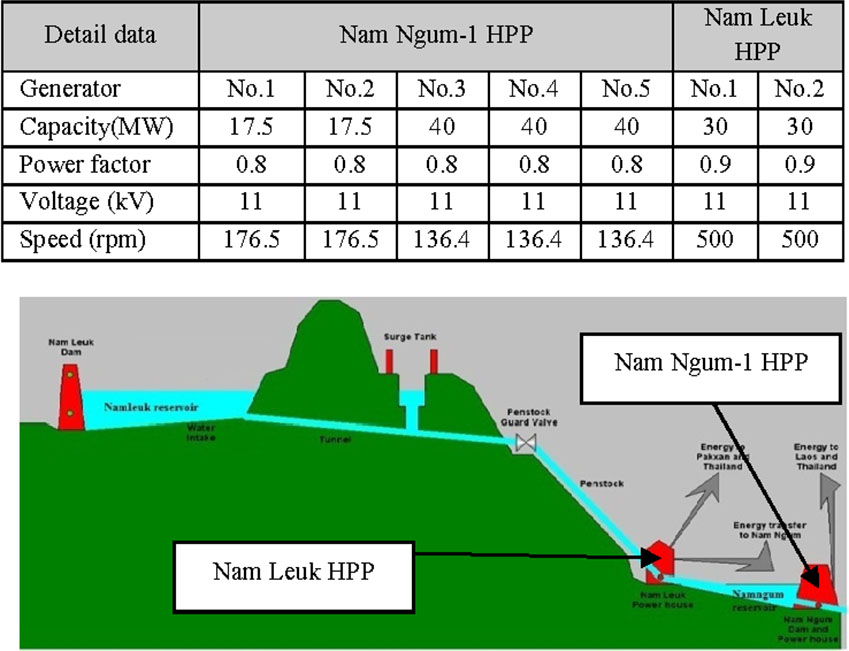
The water intake structure is located at the north end of the reservoir closest to the powerhouse and the Nam Xan (river) which allows for a short tunnel length.
The penstock consists of a steel-lined 305 meter section in a tunnel from the surge tank to the valve chamber followed by an outdoor steel section 458 meters long leading to bifurcated branches 20 meters long each. The penstock diameter is 3.4 meters from the surge tank to the bifurcation point, 2.4 meters diameter after that and 1.65 meters at the end sections.
The project has net head of 183 meters.
The power plant has two vertical Francis turbine-generator sets of 30 MW each for a rated output of 60 MW. The annual expected production of the project was 245 GWh but now reduced to 215 GWh.

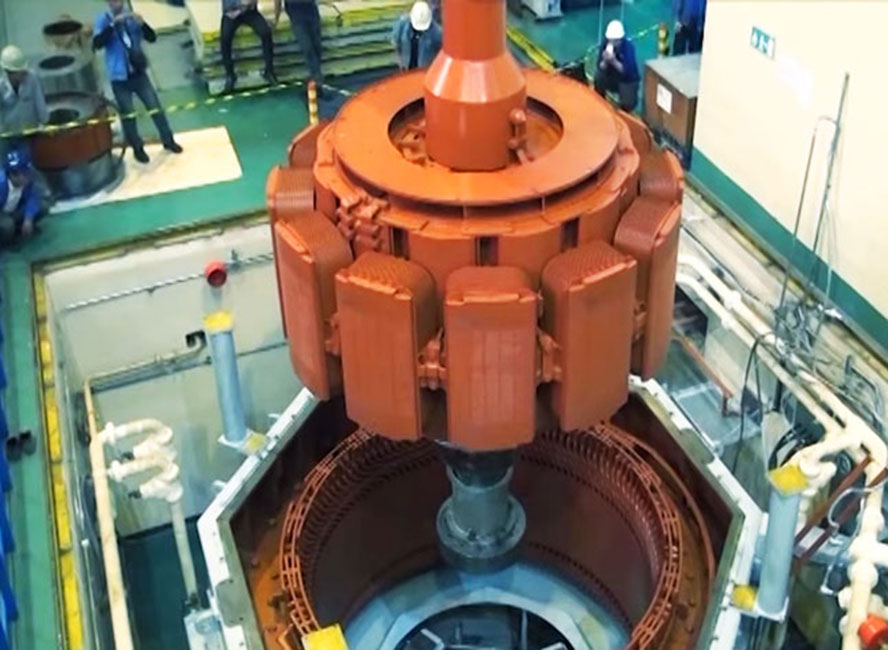
Nam Leuk penstock image below:
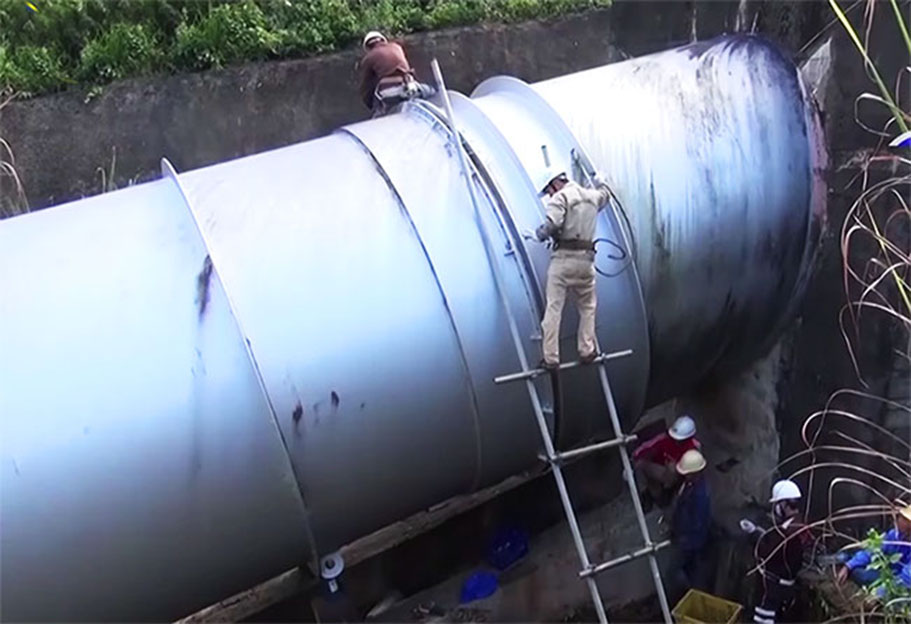
Nam Leuk powerhouse and switchyard image below:
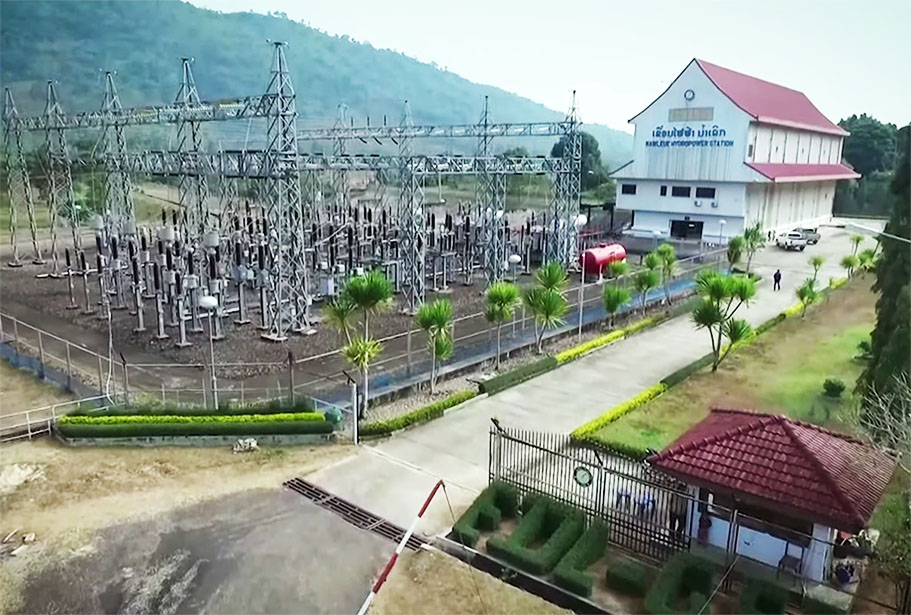
Image below shows Nam Leuk reservoir, penstock and powerhouse.

Nam Leuk hydropower project site images below:

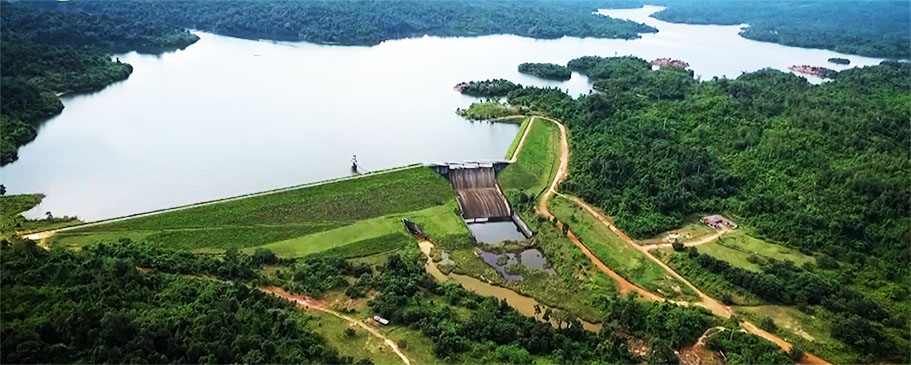
A nice Nam Leuk HPP video prepared by EDL GEN in April 2022 is HERE .
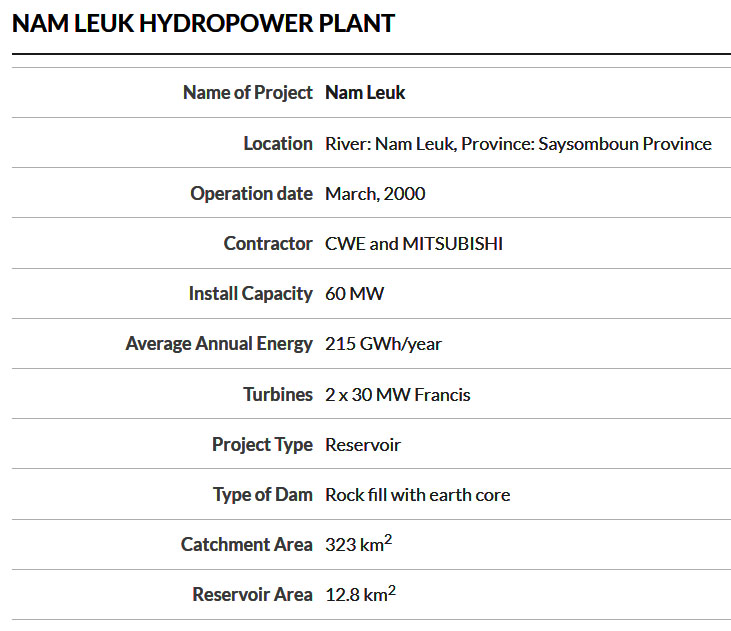
The project involved the relocation of Ban Nam Leuk Hmong village (16 households) due to loss of swidden land from construction of the reservoir.
Main features charts below:
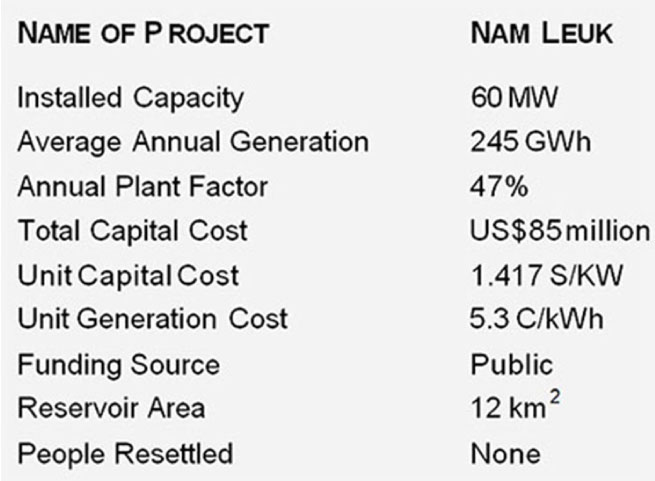
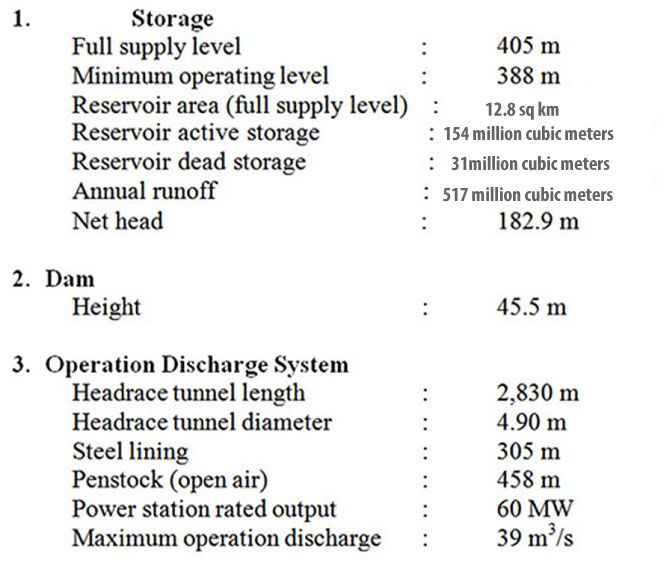
Nam Leuk Dam and diversion shown in basin map below:
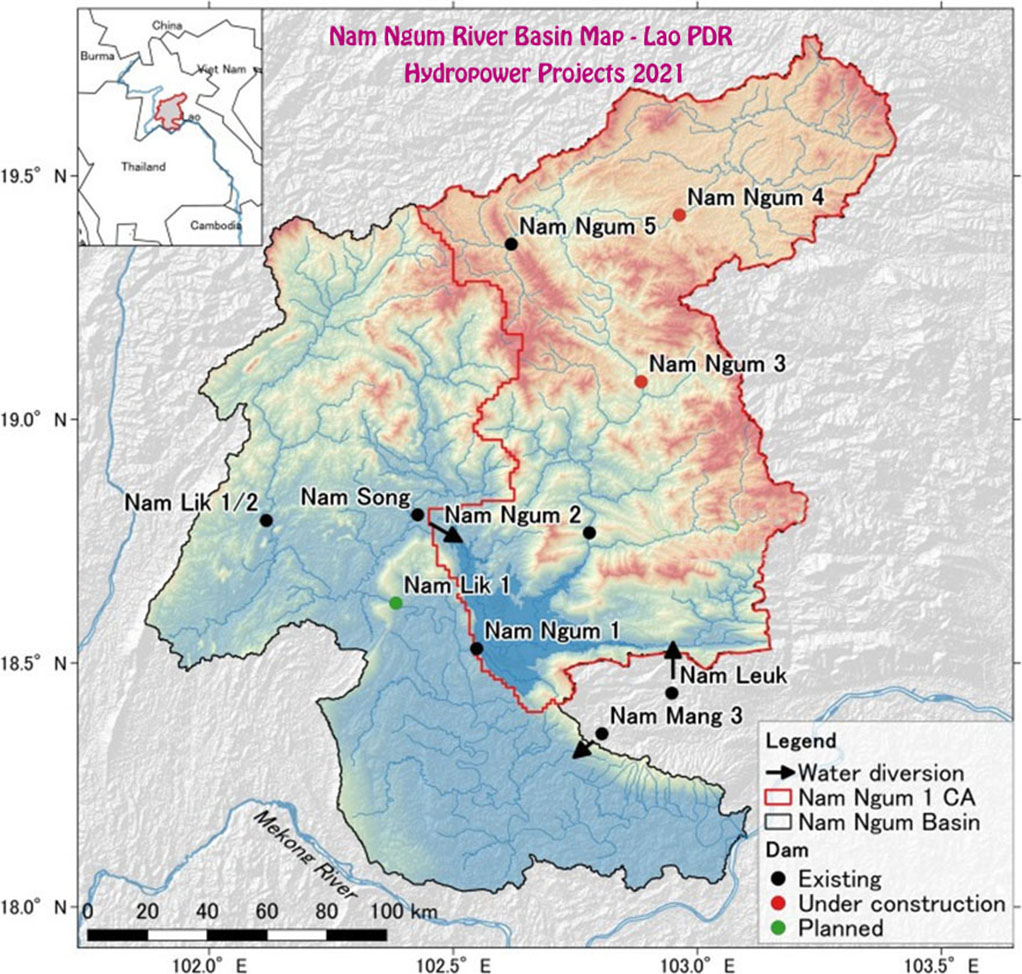
Nam Leuk Hydropower Project images below:

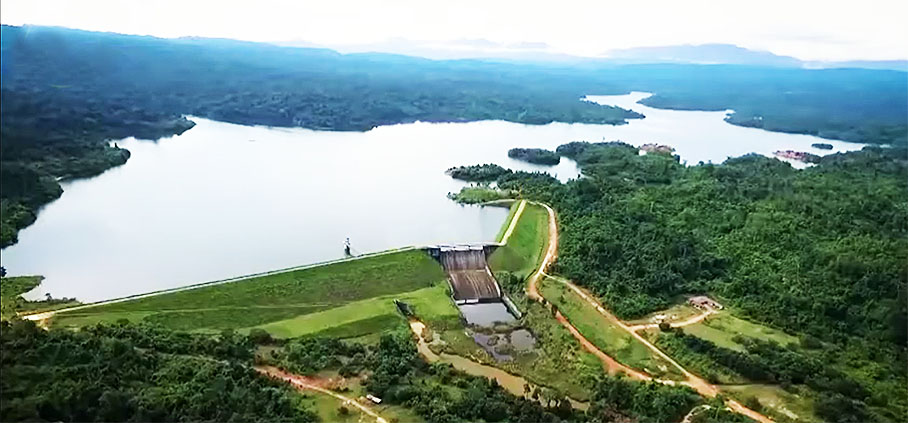

Nam Leuk Log Boom image below:
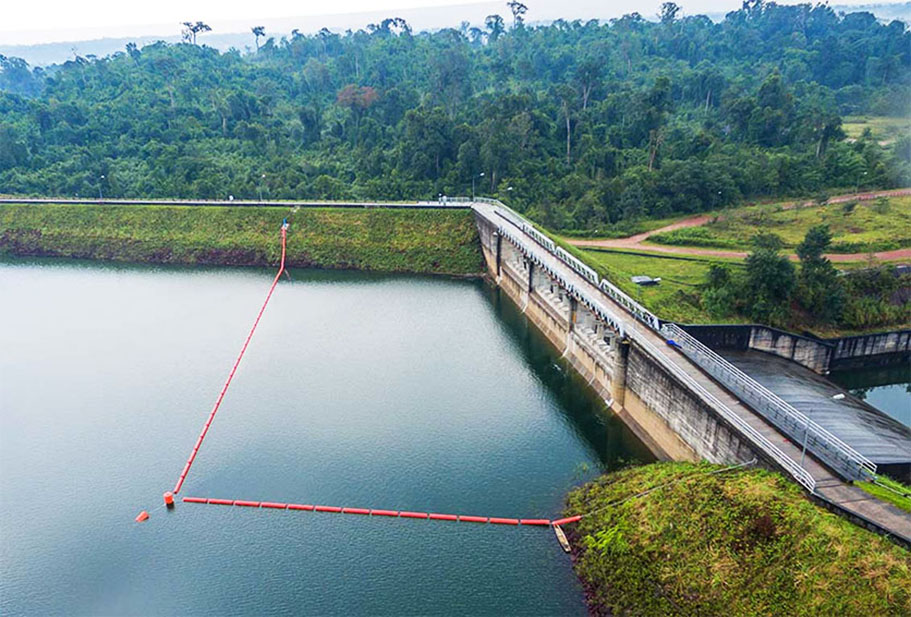
Nam Leuk Dam location shown in lower part of map below:
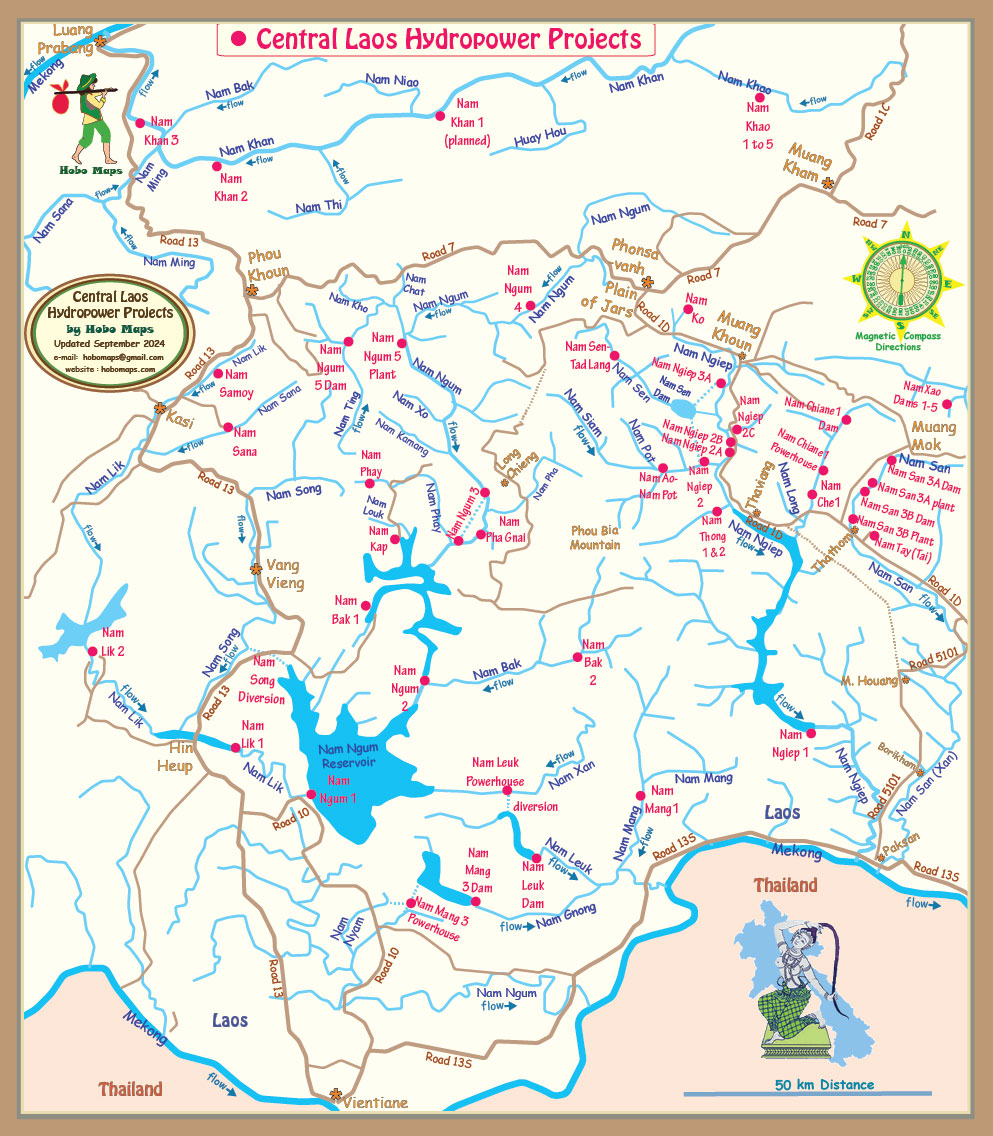
The project provides power for domestic consumption and exports the surplus to Thailand.
From the switchyard located next to the power house, electricity is conveyed by three single circuit 115 kV transmission lines, all owned and operated by EDL.
1. The first line is 38 km to Thabok substation in Bolikhamxay Province.
2. The second 115 kV line, 55 km long, follows the Nam Ngum lake shore linking Nam Leuk to Nam Ngum power house and probably is used for exports to Udon Thani in Thailand.
3. The third 115kV line, 66 km long, travels from Nam Leuk to Thingkhoun 2 substation Xaysomboun Province.
Some of the Nam Leuk's output may be exported to Thailand via a transmission line connection to Nam Ngum 1 power plant as seen below and ending up at Udon Thani.
